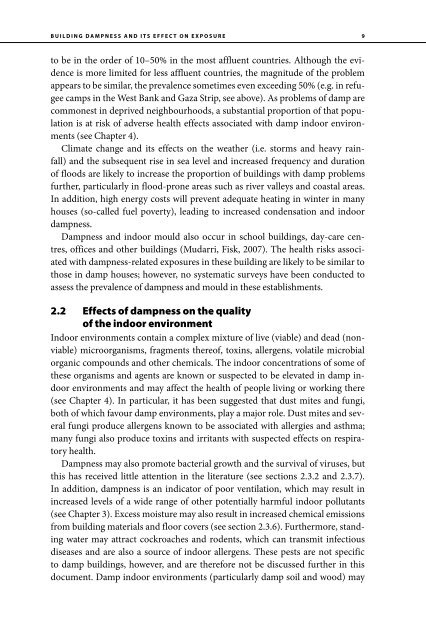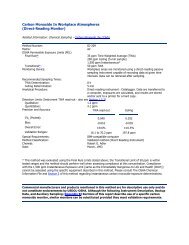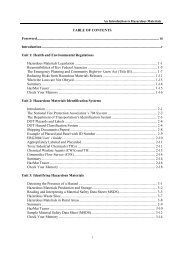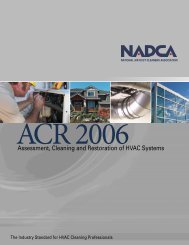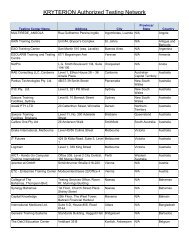Dampness and Mould - WHO guidelines for indoor air quality - PRWeb
Dampness and Mould - WHO guidelines for indoor air quality - PRWeb
Dampness and Mould - WHO guidelines for indoor air quality - PRWeb
Create successful ePaper yourself
Turn your PDF publications into a flip-book with our unique Google optimized e-Paper software.
BUILDING DAMPNESS AND ITS EFFECT ON EXPOSURE<br />
9<br />
to be in the order of 10–50% in the most affluent countries. Although the evidence<br />
is more limited <strong>for</strong> less affluent countries, the magnitude of the problem<br />
appears to be similar, the prevalence sometimes even exceeding 50% (e.g. in refugee<br />
camps in the West Bank <strong>and</strong> Gaza Strip, see above). As problems of damp are<br />
commonest in deprived neighbourhoods, a substantial proportion of that population<br />
is at risk of adverse health effects associated with damp <strong>indoor</strong> environments<br />
(see Chapter 4).<br />
Climate change <strong>and</strong> its effects on the weather (i.e. storms <strong>and</strong> heavy rainfall)<br />
<strong>and</strong> the subsequent rise in sea level <strong>and</strong> increased frequency <strong>and</strong> duration<br />
of floods are likely to increase the proportion of buildings with damp problems<br />
further, particularly in flood-prone areas such as river valleys <strong>and</strong> coastal areas.<br />
In addition, high energy costs will prevent adequate heating in winter in many<br />
houses (so-called fuel poverty), leading to increased condensation <strong>and</strong> <strong>indoor</strong><br />
dampness.<br />
<strong>Dampness</strong> <strong>and</strong> <strong>indoor</strong> mould also occur in school buildings, day-care centres,<br />
offices <strong>and</strong> other buildings (Mudarri, Fisk, 2007). The health risks associated<br />
with dampness-related exposures in these building are likely to be similar to<br />
those in damp houses; however, no systematic surveys have been conducted to<br />
assess the prevalence of dampness <strong>and</strong> mould in these establishments.<br />
2.2 Effects of dampness on the <strong>quality</strong><br />
of the <strong>indoor</strong> environment<br />
Indoor environments contain a complex mixture of live (viable) <strong>and</strong> dead (nonviable)<br />
microorganisms, fragments thereof, toxins, allergens, volatile microbial<br />
organic compounds <strong>and</strong> other chemicals. The <strong>indoor</strong> concentrations of some of<br />
these organisms <strong>and</strong> agents are known or suspected to be elevated in damp <strong>indoor</strong><br />
environments <strong>and</strong> may affect the health of people living or working there<br />
(see Chapter 4). In particular, it has been suggested that dust mites <strong>and</strong> fungi,<br />
both of which favour damp environments, play a major role. Dust mites <strong>and</strong> several<br />
fungi produce allergens known to be associated with allergies <strong>and</strong> asthma;<br />
many fungi also produce toxins <strong>and</strong> irritants with suspected effects on respiratory<br />
health.<br />
<strong>Dampness</strong> may also promote bacterial growth <strong>and</strong> the survival of viruses, but<br />
this has received little attention in the literature (see sections 2.3.2 <strong>and</strong> 2.3.7).<br />
In addition, dampness is an indicator of poor ventilation, which may result in<br />
increased levels of a wide range of other potentially harmful <strong>indoor</strong> pollutants<br />
(see Chapter 3). Excess moisture may also result in increased chemical emissions<br />
from building materials <strong>and</strong> floor covers (see section 2.3.6). Furthermore, st<strong>and</strong>ing<br />
water may attract cockroaches <strong>and</strong> rodents, which can transmit infectious<br />
diseases <strong>and</strong> are also a source of <strong>indoor</strong> allergens. These pests are not specific<br />
to damp buildings, however, <strong>and</strong> are there<strong>for</strong>e not be discussed further in this<br />
document. Damp <strong>indoor</strong> environments (particularly damp soil <strong>and</strong> wood) may


